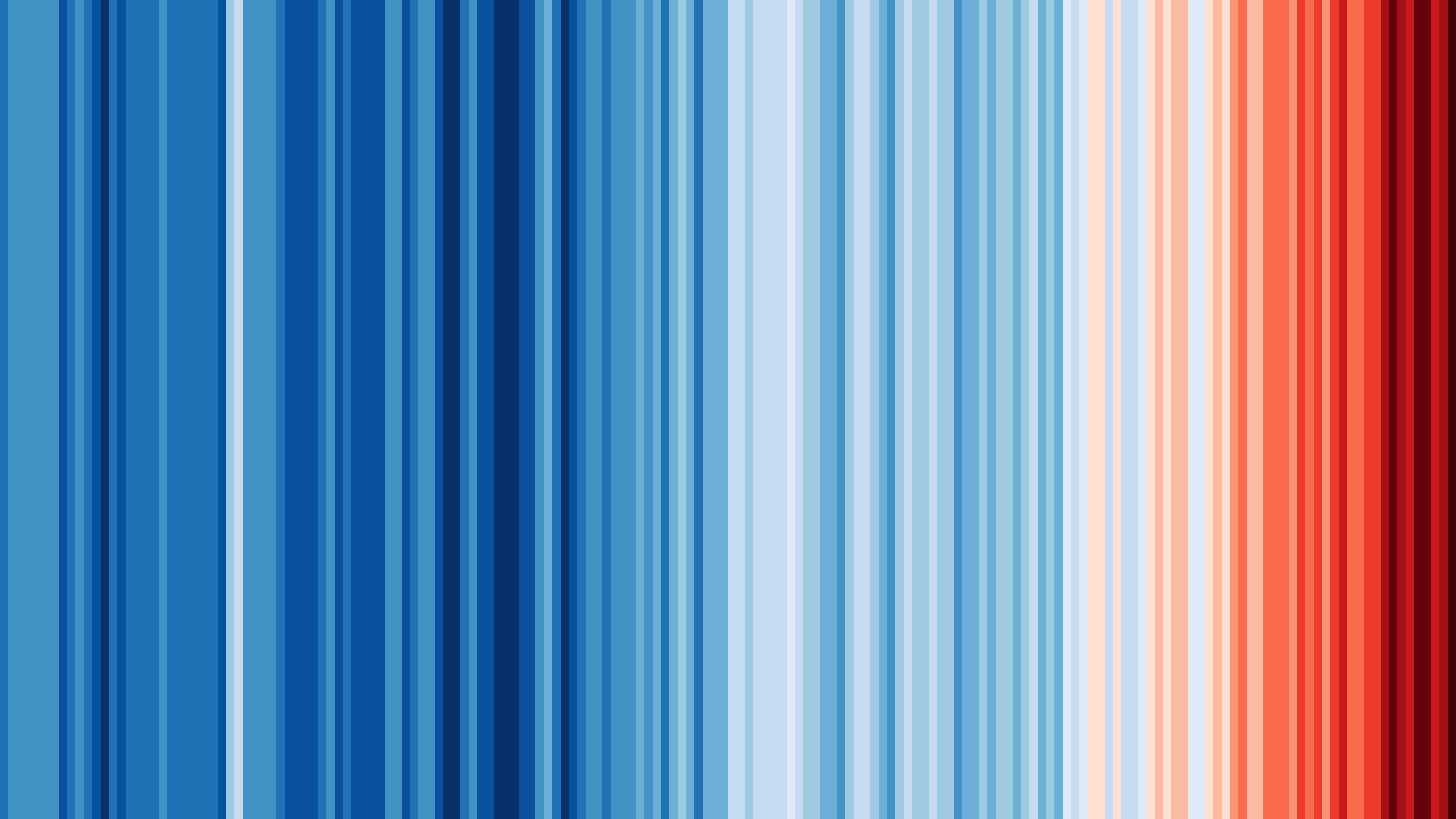

Wildlife and weather photography
by Kirsty McCabe, FRMetS
The weather is our favourite topic of conversation in the UK, but I reckon our pets come a close second. So, with that in mind, I’ve had a dig through our Weather Photographer of the Year archives and found some of the best weather and climate images that feature an animal or two. Enjoy!

Joann has spent many hours observing the semi-feral ponies on Cefn Bryn in south Wales. After a heavy hailstorm, she quickly captured this beautiful shot of a rain-soaked wild pony under a rainbow.
Rainbows are formed when light from the sun is scattered by water droplets through a process called refraction. This occurs when the light from the sun changes direction when passing through a medium denser than air, such as a raindrop. Once the refracted light enters the raindrop, it is reflected off the back and then refracted again as it exits and travels to our eyes. Since the amount of refraction depends on wavelength, the white light is broken into its constituent colours. To see a rainbow, the sun must be behind you and the water droplets in front.

On a typical May evening on the east coast of Ireland, Susan headed out to her cockapoo Evie’s favourite playground, the South Beach, Greystones.
The minute she stepped onto the sand, the dark clouds gathered, and the heavens opened. Susan describes it as that beautiful warmish rain mixed with low evening sunshine. Susan and Evie were rewarded with this beautiful double rainbow, which she captured on her phone camera.
Rainbows form due to the refraction (bending) and reflection of sunlight as it passes through raindrops. Clearly shown here, the colour banding in the secondary outer bow is in the opposite direction to the primary bow, which happens when the light is reflected twice off the back of the raindrops.
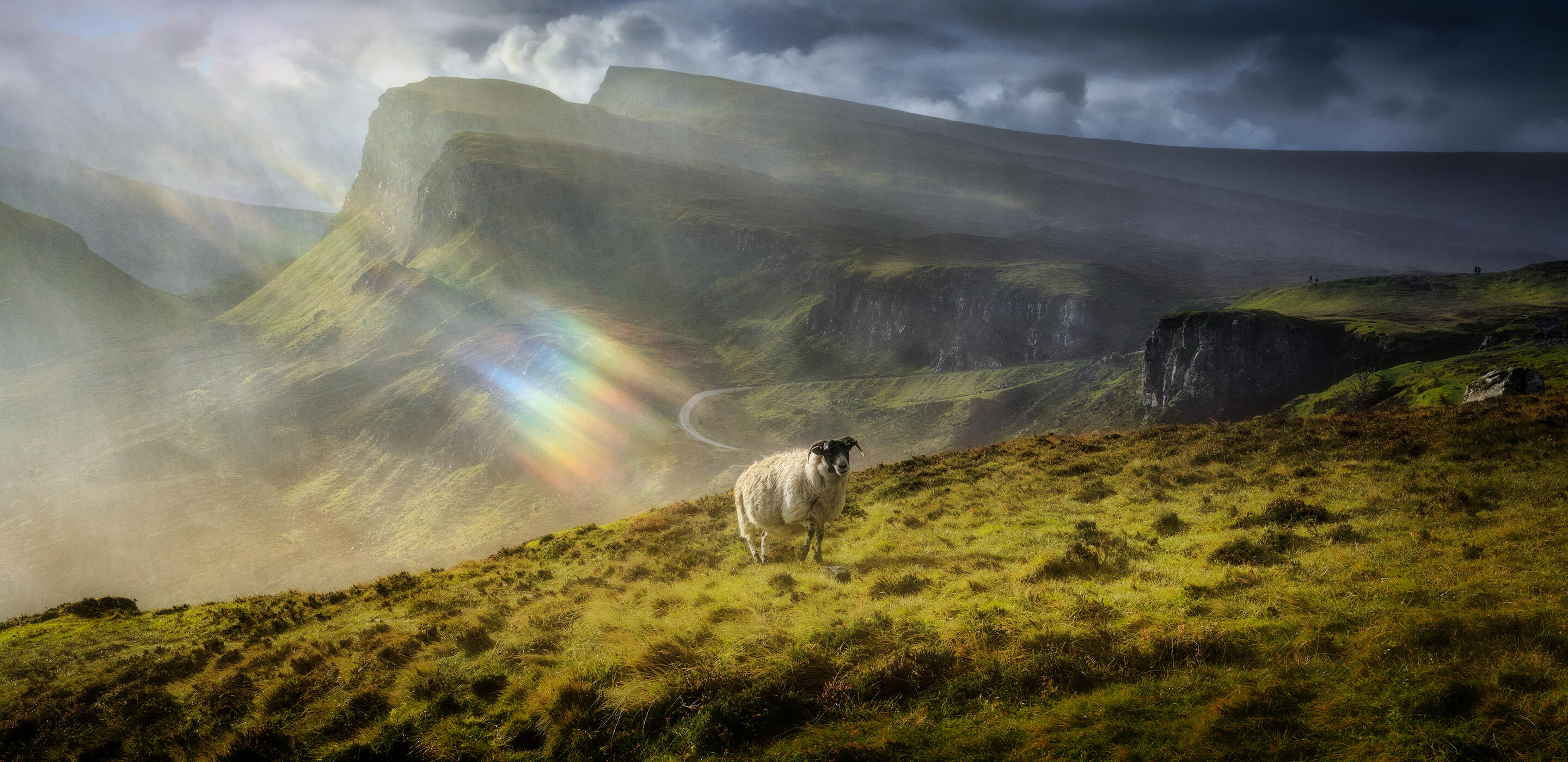
Calvin Downes experienced a classic case of sunshine and showers on the Isle of Skye in October 2019. As the sun’s rays shone through the clouds over the Quiraing, Calvin’s camera captured a rainbow of colours shining directly on a sheep. He had to be quick to catch the light shining on “God’s chosen lamb” before too many raindrops gathered on the lens.
Showers fall from convective clouds, such as cumulus or cumulonimbus. They tend to be short-lived, localised and can be intense. But showers are often hit and miss, making them tricky to forecast. It can be likened to boiling a pan of water, you know that bubbles will form, but you can’t predict exactly where and when the bubbles will pop up.
As well as the term sunshower, people around the world have their own expressions for rain and sunshine at the same time. In South Africa it’s known as a “monkey’s wedding”, in Poland “the witch is making butter”, while in Spain “the rabbits are giving birth”.
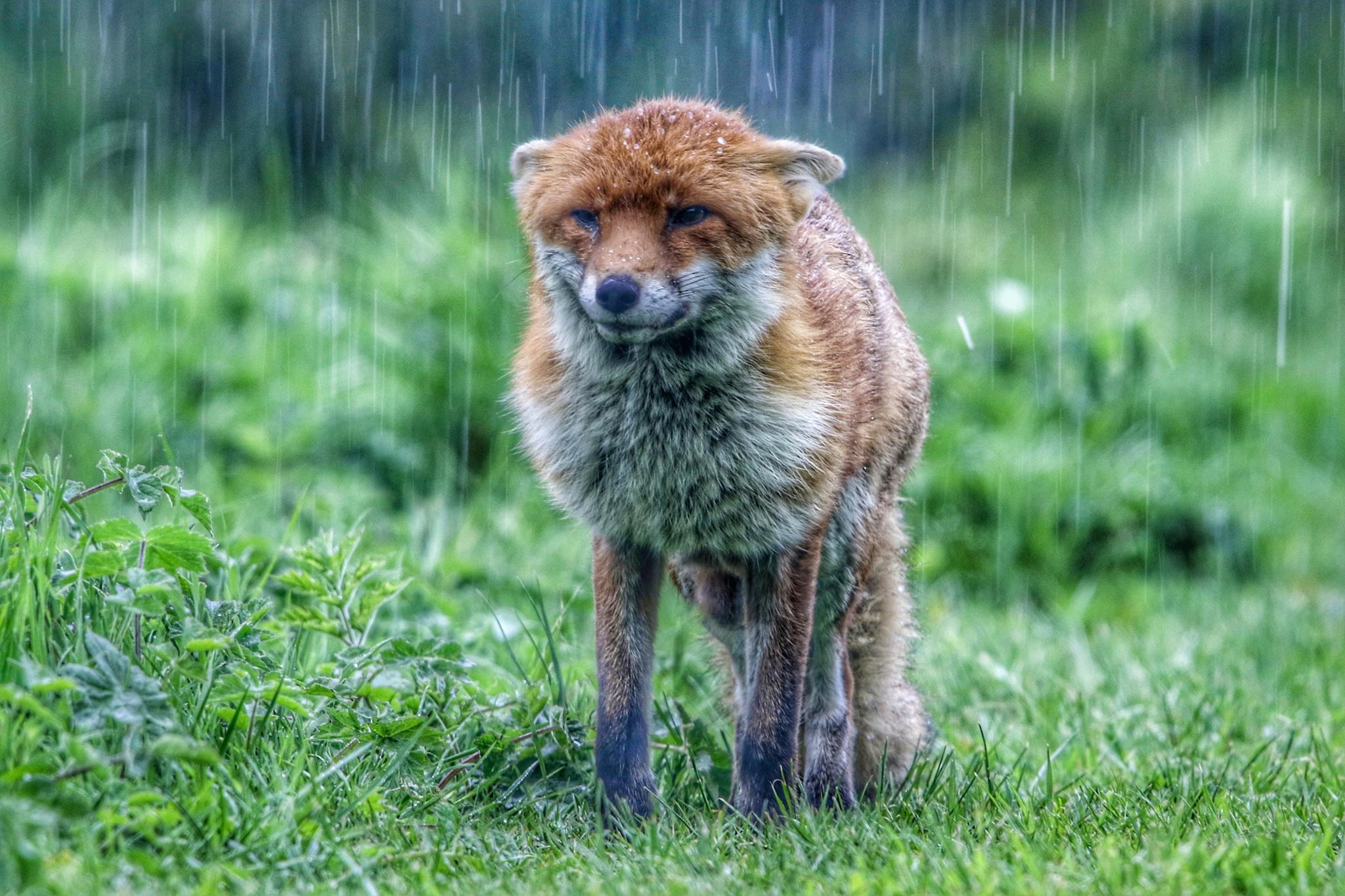
A young vixen weathers a sudden spring hailstorm in Rayleigh, Essex, England. Have you ever noticed a distinctive, earthy odour when it begins to rain? This smell, called petrichor, is especially noticeable following a warm, dry period. Before it begins to rain, the humidity of the air tends to increase, causing the pores of rocks and soil to fill with moisture. This forces some of the oils from the earth into the air, releasing fragrant chemical compounds at the same time. The strongest scent generally occurs when the rainfall arrives. As a raindrop hits the ground, small air bubbles become trapped on the surface, which then shoot upwards and burst out of the drop, throwing aerosols into the air where they are then distributed by the wind. The main contributor to the resulting scent is a compound called geosmin that is released by actinobacteria – tiny microorganisms that work to decompose organic matter.

On 31 October 2020, Andrew went to York first thing in the morning after seeing that the level of the River Ouse had risen to a point where flooding was possible to roads and riverside property. Keen to show the effects of the flooding, he spent some time photographing the water pumps and bikes that had been left chained to fences and which were now underwater. He then spotted the Pedestrians sign, which gave his picture some perspective by showing how high the water was. But it is the flock of Canadian Geese heading upstream that really makes the image.
Approximately 1.9 million people across the UK live in areas at significant risk from either river, coastal or surface water flooding. That number could double as early as the 2050s, with an expected increase in the frequency and severity of floods.

Hawaii’s Big Island blooms with all kinds of life thanks to its humid climate. In fact, Hawaii is one of the greenest places on Earth. Every day, it rains somewhere on the islands and the gentle misting rain, referred to as "kilihune", is great for cooling off. Although I’m not sure this cat is enjoying his prowl through the rain.
The volcanic crater of Mt. Waialeale on the island of Kauai receives an average of 1,234 cm of rainfall a year and is considered the wettest place on Earth!
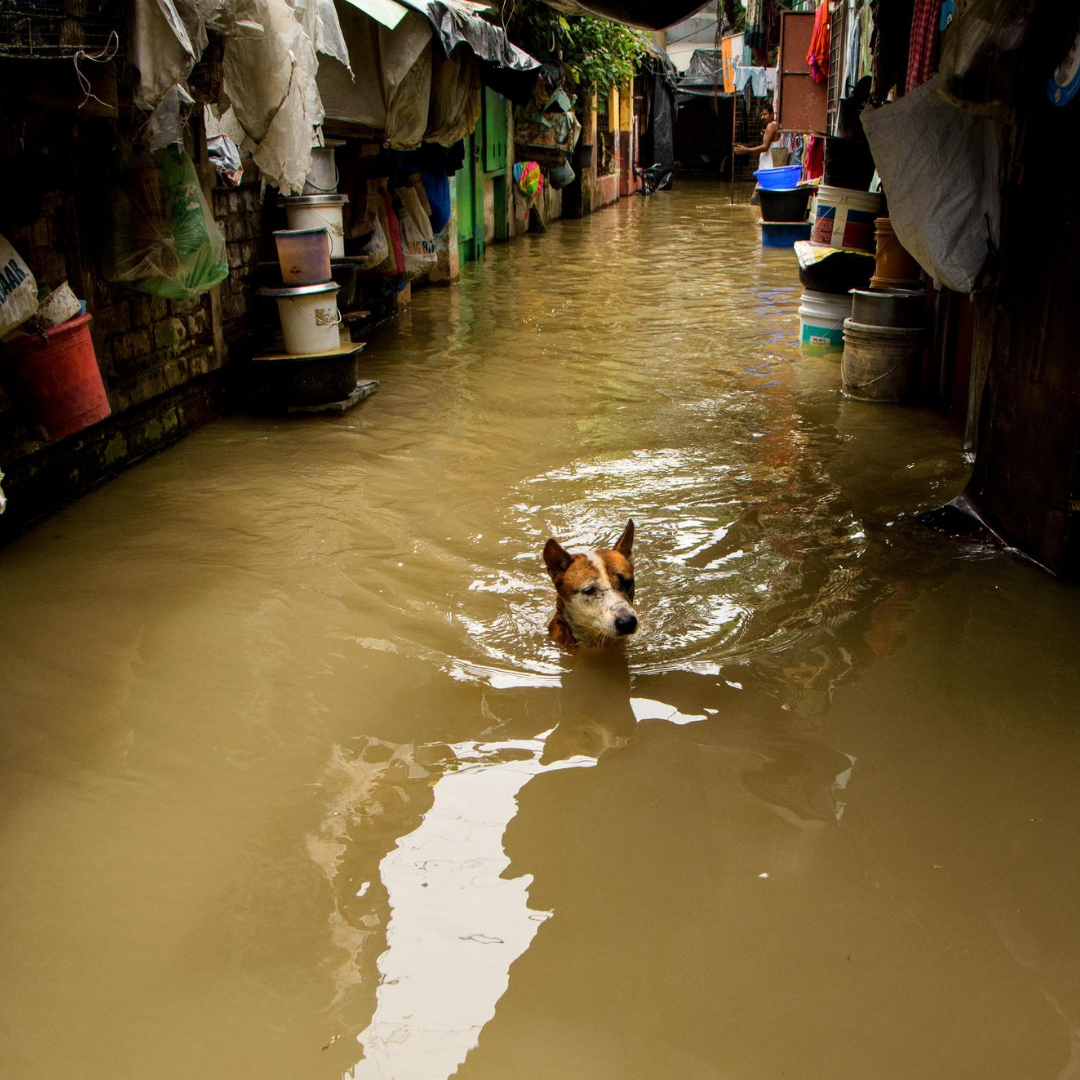
In this photo, Sudipta Chatterjee reminds us of the impacts that extreme weather events can have on humans and animals alike. In June 2021, an extreme high tide caused the Hooghly River to overflow its banks, flooding the streets of Kolkata, in India.
As the burning of fossil fuels continues to heat the planet, the melting of ice on land and the thermal expansion of the oceans causes sea levels to rise across the globe. This means that high tides will continue to get higher and higher, making scenes like this one of a street dog desperately seeking shelter more and more common.

This photo taken in Mandalay in Myanmar show the kindness of young boys making sure the goats get a drink, despite a scarcity of water. Myanmar is at considerable risk from environmental extremes and climatic change (droughts and floods). In 2023, Asia remained the world’s most disaster-hit region from weather, climate and water-related hazards. Floods and storms caused the highest number of reported casualties and economic losses, whilst the impact of heatwaves became more severe, according to a report from the World Meteorological Organization.
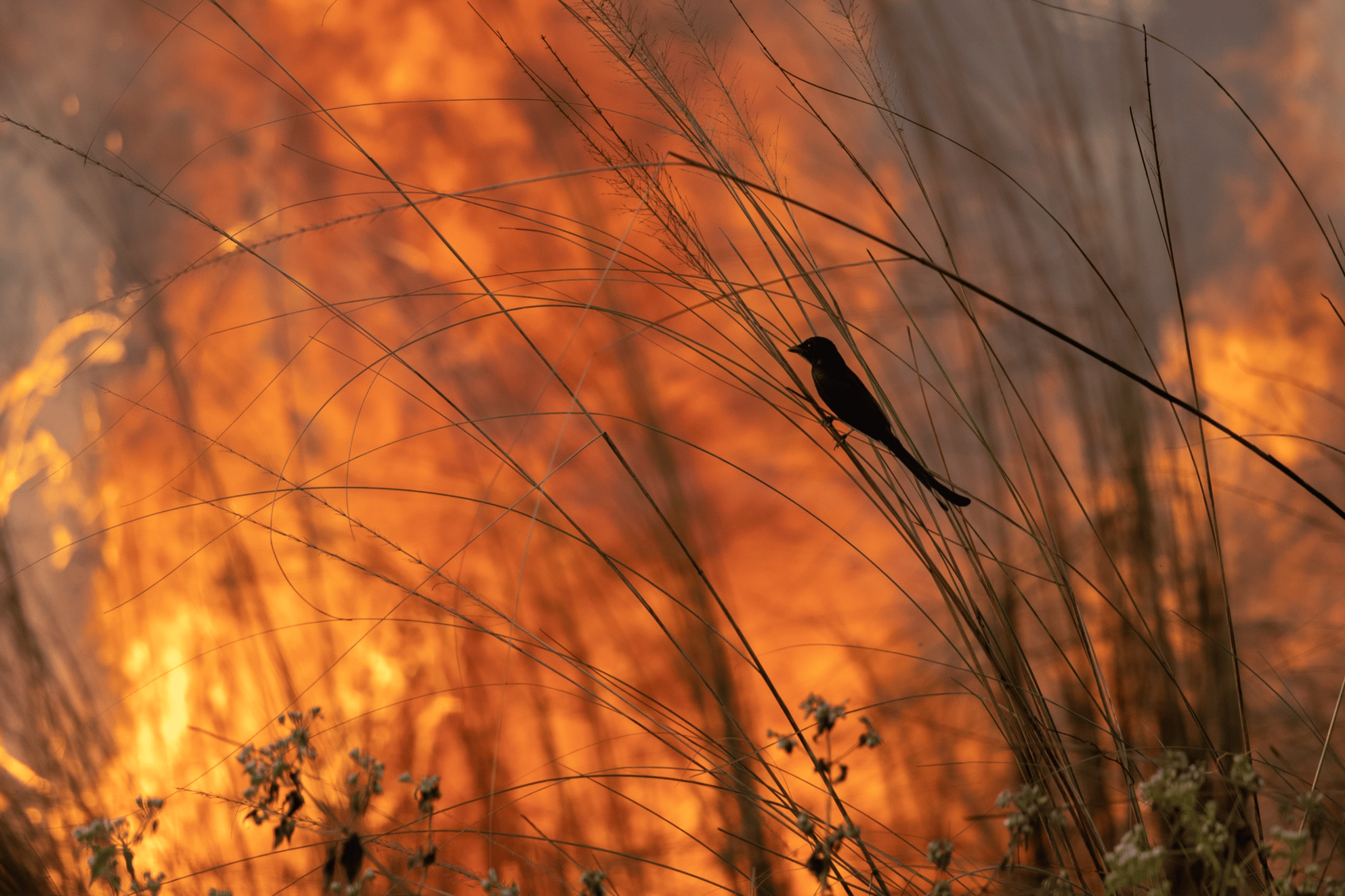
This photo blurs the lines between the human and natural worlds, as a fire blazes through a human-made jungle. Photographer, Mahmudul Hasan, captured the image in Bangladesh, one of the most vulnerable countries to climate change.
Wildfires might not be triggered by climate change, but rising temperatures and — in some regions — increased drought can create more combustible materials, adding fuel to the fire and exacerbating wildfires the world over, with blazes that spread further and last longer. Better forest management and more education around the triggers of fires can help protect jungles — and birds — like these, as the world continues to heat.

During a beautiful, calm evening in Tankerton, Kent, Brendan captured this image of people and dog walkers on the famous shingle ‘street’, exposed at low tide, as they were treated to a spectacular mock mirage sunset over the Thames Estuary.
During a mock mirage sunset, the sun is distorted and appears to be sliced horizontally. This can occur when there are one or more shallow layers in the atmosphere with a temperature difference between each layer, known as temperature inversions. The sunlight is refracted more as it travels through colder layers, distorting how an object appears. A temperature inversion also caused another optical phenomenon called an inferior mirage, making the distant buildings in Southend appear elevated above their normal position.
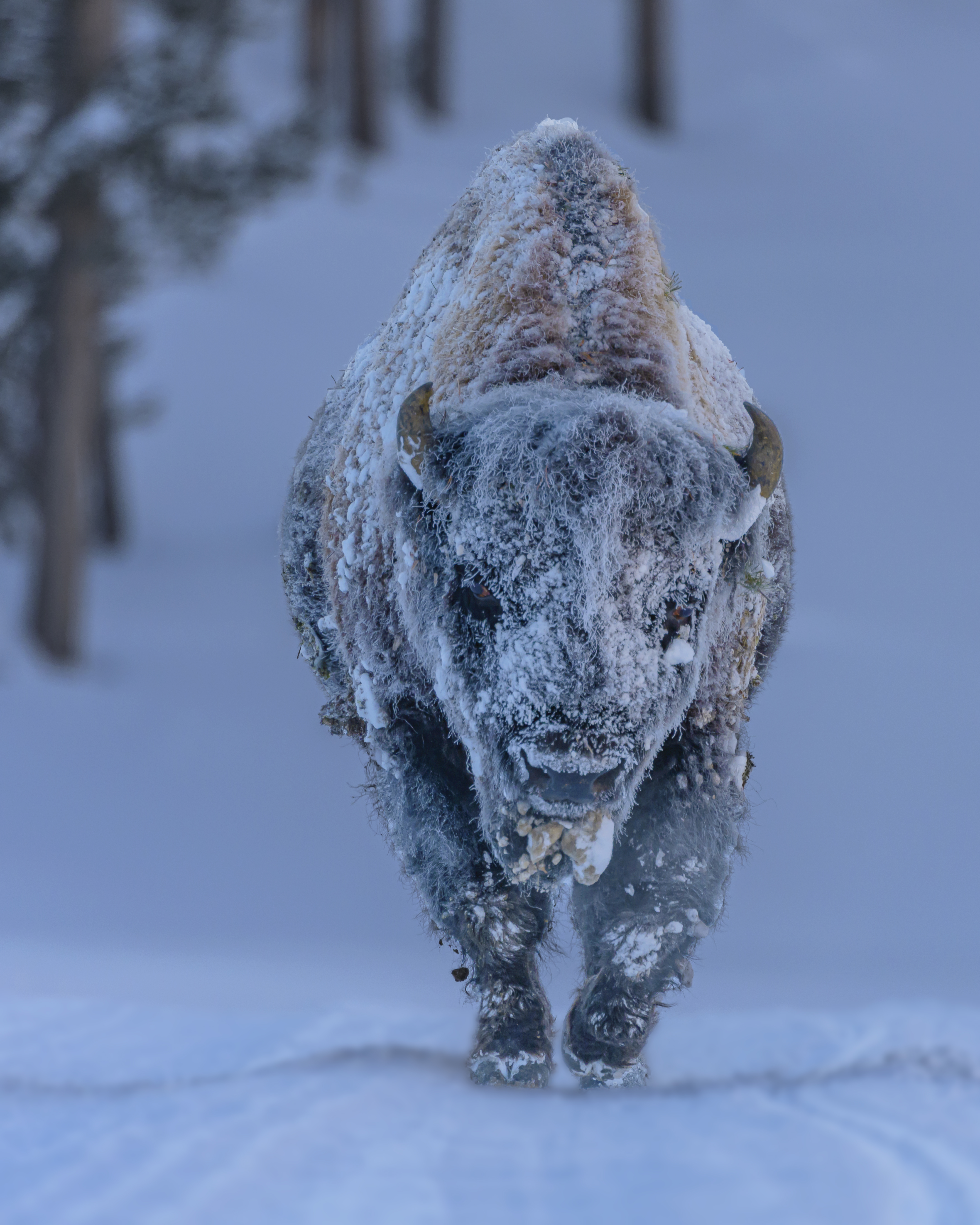
Winter temperatures in Yellowstone National Park in the USA are extreme, typically ranging from -20ºC to -5ºC. During colder months it is common to see a mixture of snow and hoar frost on a bison’s winter coat. Hoar frost forms when water vapour in the air comes into contact with an object that is below freezing. Rather than the water vapour first condensing onto the object and then freezing, the water vapour immediately freezes to form ice crystals.
During a very cold sunrise, Laura saw this this magnificent bison sauntering down the road. Keeping the required distance, she grabbed some photos and quickly got back in her vehicle, watching the bison walk past as if she were not even there.

A flock of sheep huddle together while snow spindrift is whipped up by strong winds sweeping across the wintry landscape in Swaledale, North Yorkshire at sunrise. When strong winds combine with lying snow, drifting often occurs.
The amount of particles that become suspended depends on the age and condition of the surface snow, and the strength and gustiness of the wind. Drifting snow is defined as an ensemble of particles raised by the wind to small heights above the ground. When horizontal visibility at eye level (~1.8 metres above the ground) becomes poor due to drifting snow, the phenomenon is known as blowing snow.

Alfie the intrepid puppy explores a frosty Ampthill Park in Bedfordshire on a misty morning. Already the rising sun is burning through the mist and fog, and the sparkling icy hoar frost on the grass will soon disappear.
Radiation fog usually occurs in winter under clear skies and light winds. The land cools overnight, cooling the air close to the surface. The cooler air can't hold as much moisture so it condenses into fog. Radiation fogs usually lift soon after sunrise as the ground warms up.
Weather Photographer of the Year 2024
Hopefully these amazing images of wildlife, weather and climate have inspired you to capture a winning weather or climate photograph.
You have until 18th June 2024 to enter this year's Standard Chartered Weather Photographer of the Year competition. The competition is open to photographers from around the world, of all age and abilities, and is FREE to enter.

